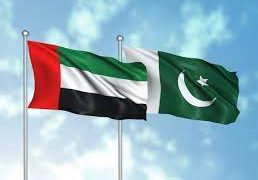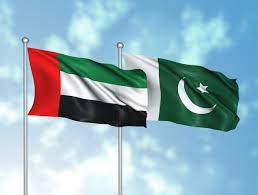ISLAMABAD: Pakistan’s economic growth rebounded to 3.9% in fiscal year 2020-2021 and is expected to reach 4% in fiscal year 2021-22, as business activity gradually resumed in the second year of the COVID-19 pandemic, said the Asian Development Bank (ADB) in a report released Wednesday.
According to the Asian Development Outlook (ADO) 2021 Update, ADB’s annual flagship economic publication, Pakistan’s economy is expected to continue recovering in FY22, supported by stronger private investment, improving business activity, a steady vaccine rollout, and economic stimulus measures for FY22.
The report mentioned that in Pakistan, GDP recovered more strongly in FY21 than forecast in ADO 2021 and growth is expected to be the same as projected in April. Comparatively, the economies of Bangladesh and Nepal underperformed relative to projections in FY21.
“Pakistan’s economy is on the path to recovery, supported by promising growth in the industry and services sectors,” said ADB Country Director for Pakistan Yong Ye.
“The continued rollout of the COVID-19 vaccination programme, structural reforms, and the expansion of social protection programmes are all key to ensuring inclusive and sustainable growth.”
“Fiscal incentives and policies to boost export competitiveness, bolster the performance of the manufacturing sector, and augment private investment will continue to play an instrumental role in strengthening the economic outlook,” the official added.
The statement added that Pakistan’s economic growth in FY21 was supported by improved COVID-19 containment strategies through the second and third waves of infections and continued accommodative fiscal and monetary policies that accelerated the recovery across all sectors.
“Growth in industry, predominantly construction and small-scale manufacturing, and services are forecast to improve in FY22,” the statement read, adding that agriculture is also expected to continue supporting GDP growth.
Inflation declined to 8.9% in FY21. Food price inflation remained high due to supply chain disruptions, increased prices for wheat and sugarcane, and an extended wet monsoon.
The statement read: “Rising international oil prices boosted energy price inflation. Meanwhile, inflation for other goods eased thanks to the appreciation of the Pakistani rupee and a postponement of planned hikes for electricity tariffs and domestic fuel prices.”
During FY21, the State Bank of Pakistan, maintained its policy rate at 7% to support economic recovery. “Investment is expected to strengthen as global sentiment improves and the International Monetary Fund-supported stabilisation programme continues to progress,” it said.
‘Economic outlook is clouded’
The economy is expected to continue recovering in FY22, with real GDP projected to rise by 4%. This growth forecast assumes recovery in private investment as consumer confidence and business activity improves amid the ongoing vaccination rollout and various economic stimulus measures announced in the budget for FY22.
According to the report, the outlook also assumes the resumption of structural reform later in the year in an ongoing programme under the IMF Extended Fund Facility. “The economic outlook is clouded, however, by high uncertainty because it is closely tied to the course of the pandemic in Pakistan and globally,” the report added.
On the supply side, the outlook for agriculture is encouraging given the government’s ambitious Agriculture Transformation Plan.
Growth in the industry is forecast to improve in FY22, driven by fiscal incentives announced in the FY22 budget, a substantial rise in budgeted development spending, and strong private consumption underpinned by adequate agricultural harvests, strong remittance inflow, and a pickup in earnings as social restrictions are reduced and most economic activity resumes.
The report mentions: “Enhanced growth in agriculture and industry and an expected improvement in domestic demand are projected to boost growth in services, strengthening their contribution to growth in FY22.”
The Manila-based organisation added that the inflation is projected to slow down to 7.5% in FY22, unchanged from the forecast in ADO 2021, as food prices moderate with supply chain improvement and production increases facilitated by the government’s Agriculture Transformation Plan.
The fiscal deficit is projected to narrow to the equivalent of 6.9% of GDP in FY2022, which is still higher than the target set earlier under a medium-term fiscal consolidation programme supported by the IMF.
“Pakistan’s public debt outlook is sustainable in the medium term,” it said.
















































